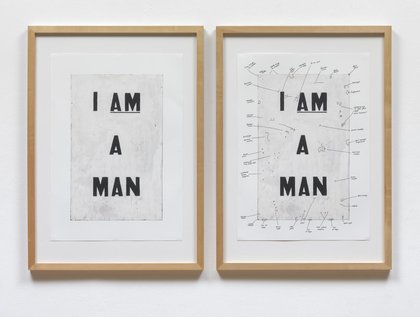What does democracy mean to you?
This display brings together artworks that look at what it means to live in a democracy. A democratic society is based on equality, protecting each person’s individual rights and upholding ideals such as freedom of speech. Often presented as ideal, there are in fact challenges in democratic societies. Marginalised groups have fought and continue to fight for recognition and representation. While extreme political groups test the limits of freedom of speech and the right to protest.
On display are artworks by Artur Żmijewski and Jenny Holzer who explore political views from extreme left to far right. In her work I Want a President 1992, Zoe Leonard argues for LGBTQIA+ and class-conscious politics. While Glenn Ligon and Lubaina Himid reference issues that Black people have faced; fighting exploitation and struggling to gain and protect their rights. Although UK and global politics have changed since many of these artworks were made, the issues raised continue to be relevant today.

